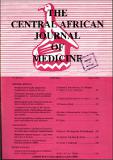| dc.contributor.author | Ezeala, C.C. | |
| dc.contributor.author | Chukwurah, E. | |
| dc.date.accessioned | 2015-12-18T12:13:27Z | |
| dc.date.available | 2015-12-18T12:13:27Z | |
| dc.date.issued | 1994-08 | |
| dc.identifier.citation | Ezeala,C.C. and Chukwurah, E. (1994) Hypothyroxinemia in Acquired Immune Deficiency Syndrome (AIDS), The Central African Journal of Medicine,(CAJM), vol. 40, no.8, pp.226-229. Harare: CAJM. | en |
| dc.identifier.issn | 0008-9176 | |
| dc.identifier.uri | https://opendocs.ids.ac.uk/opendocs/handle/20.500.12413/7251 | |
| dc.description | A journal article on HIV/Aids. | en |
| dc.description.abstract | Acquired immune deficiency syndrome (AIDS), a disease predictive of a defect in the cell-mediated immunity, is caused by the human immuno-deficiency virus (HIV).1'1 Infection with this virus results in a gradual but progressive deterioration of immune function leading to disease manifestation. The syndrome is characterised by generalised infection and lymphad- enopathy, and is often associated with multisystem disorders.
Patients with AIDS have been reported to have a high frequency of endocrine abnormalities, mostly affecting the adrenal gland, but also the thyroid and other endocrine organs.4-8 These lesions may result from necrosis, infection of the organs, or malignant transformations, presenting as Kaposi sarcomas | en |
| dc.language.iso | en | en |
| dc.publisher | Faculty of Medicine, Central African Journal of Medicine (CAJM), University of Zimbabwe (UZ) | en |
| dc.rights.uri | http://creativecommons.org/licenses/by-nc-nd/3.0/ | en |
| dc.subject | HIV/AIDS | en |
| dc.title | Hypothyroxinemia in Acquired Immune Deficiency Syndrome (AIDS) | en |
| dc.type | Article | en |
| dc.rights.holder | University of Zimbabwe (UZ) | en |


